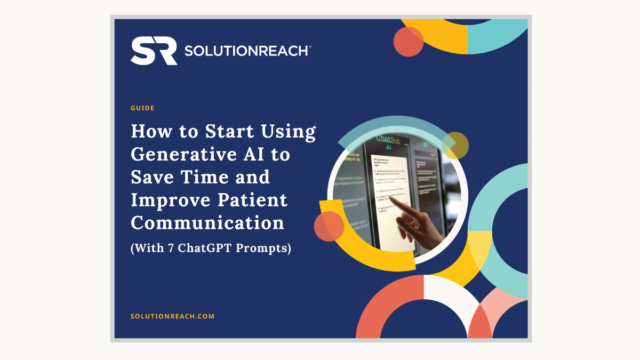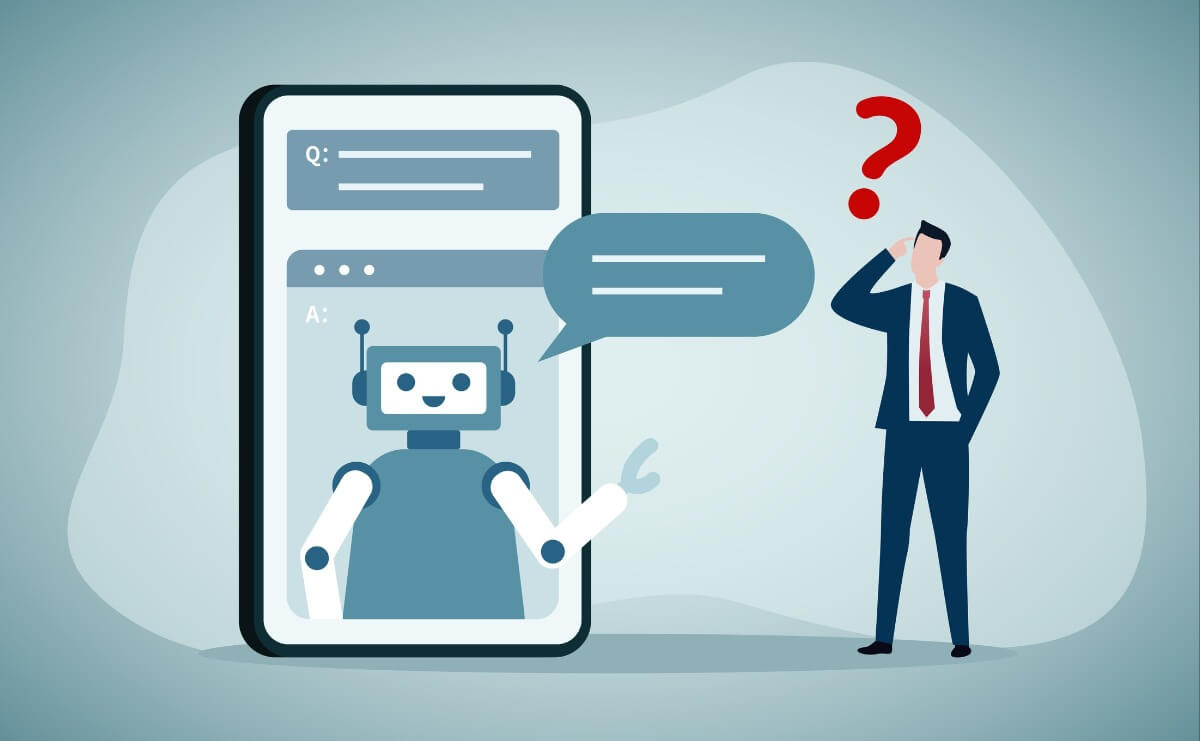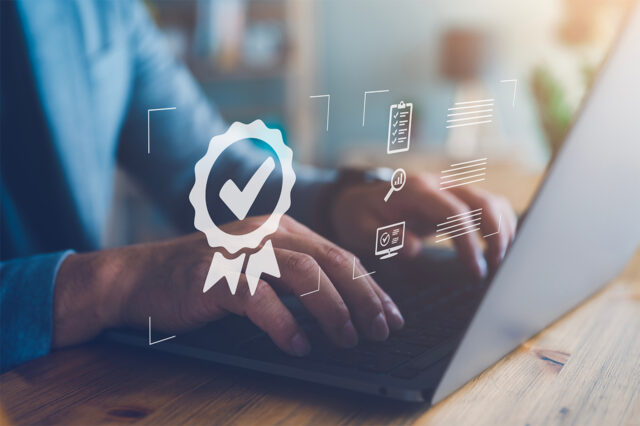You really can’t go anywhere or do anything these days without hearing the technology buzzword “AI,” short for artificial intelligence. It’s in the news, in popular culture, and in many of the electronic devices you use on a daily basis. For example, 97% of smartphone owners are using AI-powered voice assistants to ask things like “restaurants near me” or “dental practice near me.”
One of the latest AI gotta-have-it tools sweeping the globe is a little thing you may have heard of called ChatGPT. It’s an internet-based generative AI chatbot that anyone can use to effortlessly and instantly create articles, essays, poems, and virtually any type of text content. OpenAI debuted the free tool in November 2022, and it currently has roughly 13 million daily users.
But what exactly is AI, why is it so popular, and most importantly, how can it help create efficiencies for healthcare practices like yours? We’ll dive into these topics, show you how AI is transforming the healthcare industry, and share tips on how your practice can benefit from AI starting today.
What is AI, and why is it an important tool for practices?
In a nutshell, AI technology is everything that computers can’t do. It’s the family of digital technologies that gives machines the capability to imitate human intelligence, including planning, deep learning, reasoning, communication, and perception. And there are many types of AI or AI-related variations:
- Data processing
- Automation
- Machine learning
- Natural language processing
- Big data
As mentioned, one of the newest and most innovative applications of AI is generative AI. This budding technology is now incorporated into chatbots to produce content through text or voice inputs. That’s why ChatGPT and similar tools’ potential to impact how people communicate is nothing short of revolutionary. It’s kind of like how the iPhone and smartphones totally changed the way we communicate and interact.
For your practice, the applications of generative AI are potentially limitless. That’s because the technology can provide the following benefits:
- Save time
- Improve efficiency
- Personalize messaging
- Provide better patient education
- Elevate the patient experience
How are healthcare practices using AI now, and how will it be used in the future?
Practices have already jumped at the opportunities offered by AI chatbots like ChatGPT. They are helping offices like yours create new efficiencies and save staff members time. Some of these include:
- Prior authorization requests: ChatGPT has already shown promise in writing prior authorization request forms and simplifying explanation of benefits notices for patients.
- Provider communication aids: Physicians have leveraged ChatGPT to help them interpret novel medical cases, streamline note-taking, or rewrite a patient conversation in a standardized format.
- Patient messaging and content creation: You can produce a variety of patient communication messages and marketing materials tailored to your patients and your practice. From fun and informative appointment reminders and recall messages, to practice marketing letters and instantly creating patient education articles for targeted patients or groups of patients, the sky’s the limit.
In the near future, healthcare IT experts say ChatGPT will give providers the following abilities:
- Conversational patient assistants to provide personalized interactions based on a patient’s questions
- Assist practitioners in accurate diagnoses
- Schedule appointments
- Generate personalized health info/education for patients
- Automate even more clerical tasks
How can I begin using ChatGPT to benefit my practice today?
To easily begin using OpenAI’s ChatGPT or Google’s Bard right away, either go to www.openai.com and create an account or to www.bard.google.com and log in to your account or create an account. Start by typing in prompts of what you want to tool to produce, experiment by entering different prompts, and be sure you read the FAQ section.
Some specific tips and tricks for using ChatGPT and Bard include:
- Be specific and concise when entering your prompts, such as word count, what type of voice or tone (professional, friendly, etc.), and what topics or subtopics you want to be covered.
- Don’t be afraid to try several variations of your prompt to fine-tune responses.
- Use topic keywords to ensure every element you want to be included gets covered.
- Fact-check information if you’ll be using the text externally. Unfortunately, AI chatbots currently being used can “fabricate” details if they can’t locate the appropriate source information.
- Avoid putting any protected health information (PHI) in prompts to stay HIPAA compliant, including information from electronic health records (EHR).
You can use ChatGPT to quickly and easily create any number of well-written and customized patient messages and marketing content pieces. These include:
- Text/email appointment reminders
- Text/email recall notifications
- New patient emails
- Patient education newsletter articles
- Patient surveys
For example, a sample prompt to enter into ChatGPT to produce great, conversational appointment reminder text messages is:
“Create [10] creative but minimal variations of appointment reminders for text messages. The tone is professional. Include [patient first name], date and time of appointment [May 17 at 2 PM], name of provider [Jill Smith], practice name [Alpine Demo Clinic], practice phone number [801-555-1212], and TextSTOPtoOptOUT”
From there, you can copy and paste your ChatGPT messages into automated appointment reminder tool templates. From there, you can create new templates, edit existing ones and save them all for continued use.
Together with digital patient communications solutions like appointment reminders, recall notifications, batch messaging, and others, you’ll be able to create engaging and effective patient messages and materials while saving staff time, streamlining appointment workflows, and improving the patient experience.
Key Takeaways
The latest developments in AI, like ChatGPT, are forever altering the healthcare delivery landscape. These technological innovations provide you with more efficient means to engage with and care for your patients. By taking advantage of the multiple opportunities they offer—and combining their abilities with leading patient communications tools—you’ll be able to reap the efficiencies and savings to stay one step ahead of the competition. You’ll also accomplish more front office tasks with a smaller admin team, increase appointment volume, enhance your patient experience, and grow your practice.

To learn more about how you can begin using ChatGPT today to create greater efficiencies in your office, save your staff time, and get 7 ready-to-go ChatGPT templates to create custom patient messages, download the guide, “How to Start Using Generative AI to Save Time and Improve Patient Communication (With 7 ChatGPT Prompts).”
Read the Guide


